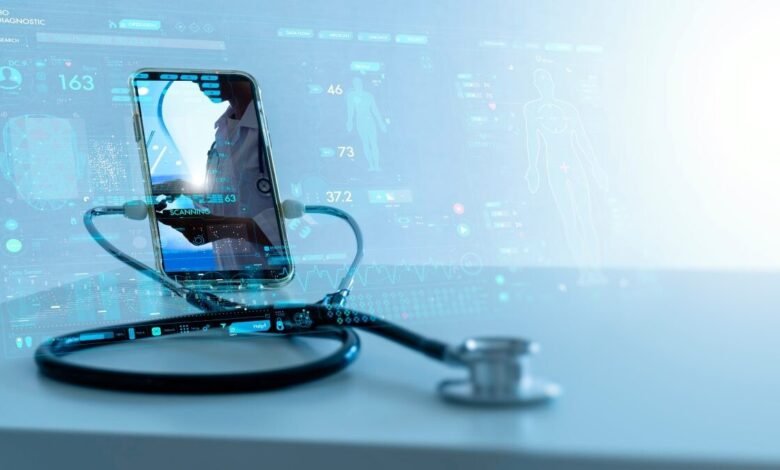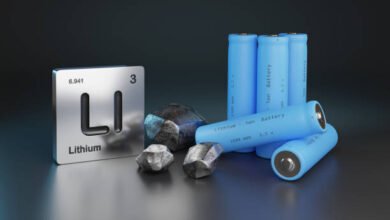How Remote Technologies are Revolutionizing the Use of Medical Equipment

How Remote Technologies are Revolutionizing the Use of Medical Equipment
The healthcare landscape is undergoing a massive transformation, with Remote Technologies playing a pivotal role in revolutionizing patient care and medical equipment management. These technologies are not only optimizing how medical equipment is used but also improving patient outcomes, increasing operational efficiency, and enabling more effective care delivery.
This blog delves into how remote technologies are reshaping healthcare by enhancing medical equipment management, patient monitoring, and healthcare access. We’ll explore how these technologies are being integrated into healthcare facilities, discuss real-world applications, and examine their future potential.
The Rise of Remote Technologies in Healthcare:
Accelerating the Adoption of Remote Technologies
The demand for remote technologies has skyrocketed in the healthcare industry, driven by the need for real-time data, automation, and efficient patient monitoring. The COVID-19 pandemic further accelerated this trend, prompting healthcare systems worldwide to invest heavily in remote technologies for both patient monitoring and equipment management.
According to a report by McKinsey & Company, the adoption of digital health tools, including remote technologies, rose by over 60% during the pandemic. This surge in adoption is a testament to the role remote technologies play in improving patient care and enabling efficient use of medical equipment.
How Remote Technologies Improve Healthcare Access
Remote technologies help bridge the gap in healthcare access by allowing patients in rural and underserved areas to receive continuous care without frequent hospital visits. These technologies enable healthcare providers to track patient health through remote patient monitoring systems integrated with medical equipment.
By leveraging remote technologies, healthcare providers can collect real-time patient data—such as heart rate, blood pressure, and oxygen levels—and receive instant updates on patient health conditions. This minimizes the need for in-person consultations and ensures timely intervention, significantly improving patient outcomes.
The World Health Organization (WHO) estimates that by 2027, 60% of healthcare services will incorporate remote technologies, reflecting the increasing importance of these tools in modern healthcare settings.
The Role of Remote Technologies in Medical Equipment Optimization:
Enhancing Efficiency and Reducing Costs
A key benefit of remote technologies in healthcare is their ability to optimize the utilization and maintenance of medical equipment. Through predictive analytics and real-time monitoring, healthcare providers can anticipate equipment failures before they happen. This reduces downtime and ensures that critical medical devices are always operational.
For example, remote patient monitoring systems can track the performance of ventilators, infusion pumps, and dialysis machines, alerting technicians to any potential issues. This proactive maintenance approach not only minimizes equipment failure but also lowers maintenance costs.
According to a report by Deloitte, predictive maintenance powered by remote technologies can reduce equipment maintenance costs by up to 25% and decrease unplanned downtime by 50%.
Improving Equipment Utilization with Real-Time Monitoring
Remote technologies also enhance the utilization of medical equipment by providing real-time updates on equipment performance and availability. For instance, in intensive care units, remote monitoring ensures that life-supporting devices are continuously operational and that any malfunctions are quickly addressed.
This real-time insight into equipment functionality leads to better resource allocation, allowing healthcare providers to use equipment more efficiently. By knowing exactly when and where devices are needed, hospitals can avoid overuse or underutilization of equipment, leading to improved patient care and optimized resources.
The Benefits of Remote Technologies in Medical Equipment Management:
Improved Patient Outcomes through Real-Time Monitoring
Remote technologies have revolutionized patient monitoring by providing healthcare professionals with real-time data on patient health. This ensures early detection of complications, enabling timely interventions that can prevent serious health issues.
For instance, remote patient monitoring tools equipped with sensors can track patients’ vitals such as heart rate, respiratory rate, and glucose levels. Doctors and nurses can access this data remotely and receive alerts if a patient’s condition deteriorates. This continuous monitoring has significantly improved patient outcomes, especially for those with chronic conditions.
A study by the American College of Cardiology found that remote patient monitoring reduced hospital readmissions by 40% in patients with heart failure, demonstrating the impact of these technologies on improving patient care.
Streamlined Data Collection and Decision Making
With remote technologies, data collection from medical equipment becomes seamless. The collected data is transmitted in real-time to healthcare providers, enabling informed decision-making and personalized treatment plans. This continuous data stream allows healthcare providers to analyze trends in patient health and adjust treatment protocols as needed.
For example, a dialysis machine equipped with remote monitoring technology can track a patient’s kidney function and send the data directly to the nephrologist. Based on the real-time data, the nephrologist can adjust the treatment plan without the need for a hospital visit.
Reducing Operational Costs and Boosting Efficiency
The use of remote technologies in medical equipment management reduces operational costs by optimizing the use of hospital resources. Predictive maintenance helps avoid expensive emergency repairs, while remote monitoring reduces the need for physical inspections, thereby cutting down on unnecessary expenses.
The Journal of Medical Economics reports that healthcare facilities that adopt remote technologies can reduce operational costs by as much as 30%, thanks to more efficient equipment management and reduced labor costs.
The Impact of Remote Technologies on Remote Patient Monitoring:
How Remote Patient Monitoring is Transforming Chronic Disease Management
Chronic diseases such as diabetes, heart disease, and COPD require continuous management. Remote patient monitoring has proven to be highly effective in providing ongoing care to patients with chronic conditions. Devices such as continuous glucose monitors (CGMs) and blood pressure cuffs are used to collect vital data, which is then transmitted to healthcare providers in real-time.
This continuous monitoring allows healthcare providers to make timely adjustments to treatment plans, helping patients manage their conditions more effectively. For example, patients with diabetes can use CGMs to track their blood sugar levels, and any anomalies in the data can prompt healthcare providers to intervene immediately.
According to the Centers for Disease Control and Prevention (CDC), remote patient monitoring for chronic diseases reduced emergency room visits by 35%, contributing to better patient outcomes and more cost-effective care.
Improving Post-Surgical Care through Remote Technologies
Post-surgical recovery often requires frequent follow-up visits, but remote patient monitoring has changed that. With remote technologies, patients can recover at home while being closely monitored by their healthcare team. Devices like wearable sensors can track recovery metrics such as wound healing, body temperature, and heart rate.
Healthcare professionals can monitor these metrics in real-time and intervene if any post-surgical complications arise. This leads to faster recovery times, fewer post-surgical complications, and reduced hospital stays.
A study by Harvard Medical School showed that post-operative patients monitored remotely experienced 30% fewer complications compared to those who did not use remote technologies.
The Future of Remote Technologies in Medical Equipment Use:
Artificial Intelligence and IoT in Remote Healthcare
The future of remote technologies in medical equipment management lies in the integration of Artificial Intelligence (AI) and the Internet of Things (IoT). AI algorithms can analyze data from remote monitoring devices and predict patient outcomes, while IoT devices enable seamless connectivity between medical devices, patients, and healthcare systems.
For example, AI-powered remote patient monitoring systems can alert healthcare providers to potential health risks before they escalate, allowing for early intervention. Similarly, IoT-connected medical devices can transmit data directly to hospital systems, ensuring real-time updates and better decision-making.
Telehealth and Remote Technologies
Telehealth services have grown exponentially, particularly during the COVID-19 pandemic, with remote technologies playing a key role in delivering care. Telehealth combined with remote monitoring tools allows healthcare providers to offer virtual consultations, track patient data remotely, and provide care to patients without the need for physical visits.
The American Telemedicine Association reports that telehealth services incorporating remote technologies are expected to grow by 40% in the next five years, further expanding the reach of healthcare services.
Conclusion:
Remote Technologies are revolutionizing how healthcare providers manage medical equipment and monitor patients. By improving access to care, enhancing equipment utilization, and reducing operational costs, these technologies are transforming the healthcare landscape. The integration of AI and IoT promises even more advancements in the near future, making remote technologies an indispensable part of modern healthcare.




